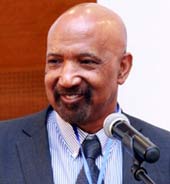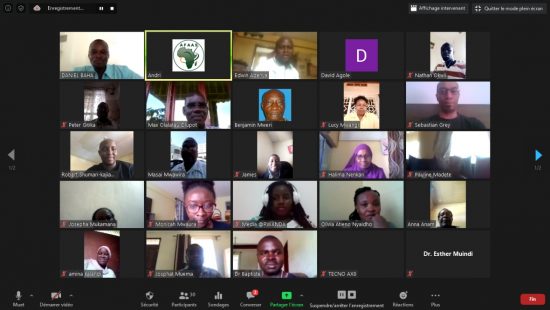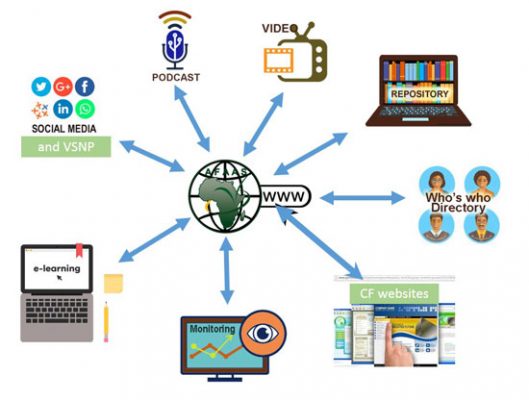By Dr Silim Nahdy
Executive Director
 During the recent months, AFAAS has rapidly adopted to digital working mode. Board members are having periodical virtual meetings, connecting from twelve countries across Africa. The Secretariat has been conducting weekly or bi-weekly meetings and in addition, the AFAAS network at Country, Continental and Global levels have organized periodic webinars and e-meetings. These are some of the rapid changes noticed and it’s still rapidly progressing in a positive way.
During the recent months, AFAAS has rapidly adopted to digital working mode. Board members are having periodical virtual meetings, connecting from twelve countries across Africa. The Secretariat has been conducting weekly or bi-weekly meetings and in addition, the AFAAS network at Country, Continental and Global levels have organized periodic webinars and e-meetings. These are some of the rapid changes noticed and it’s still rapidly progressing in a positive way.
Why this novelty?
There is no doubt that COVID-19 has been the major trigger for this organizational and institutional change, whereby face meetings and movement are restricted. But the following factors are also favorable for the shift: first, AFAAS is a continental body with members in different countries; secondly, digitalization is recognized as a new means for organizations and networks to become more performance oriented and efficient, especially with the expansion of mobile and internet coverage across the continent and the generally low cost of the accessibility of mobiles and smartphones, and; thirdly, and maybe the most important, for an Extension and Advisory Service Network like AFAAS, the use of ICT tools provides it with a powerful mean to reach the last mile (example: radio, cellphone) and make impact.
Some digital tools used at AFAAS
In the use of digital tools, AFAAS Secretariat has made some practical choices usually done in a participatory way. For instance, for meetings where information sharing, coordination and trainings are frequent, AFAAS has chosen the fast growing ZOOM.US tool, not only because of its’ ease of use but because of the network users orientation. For more in depth activity planning-coordination and reporting, a powerful and friendly tool called Monday.com is used. Google Forms is still the most commonly used survey, quizz and information collection tool used because of its commonality, simplicity and functionalities. Google Drive is used for document sharing and synchronous collaborative editing, while Mailchimp is used for Newsletter. When it comes to groups discussions and mass communication, Whatsapp Groups and DGroups.io are the most commonly used tools at AFAAS.

What is special about AFAAS and digitalization?
During the last quarter, the number of meetings and demands for organization of meetings from Country Fora has tremendously increased, with rate of 1 to 5 per week sometimes, which has tremendously increased reach with accompanying content. Since the initiation of the virtual meetings, the Board meetings have been more frequent, in–depth and sustainable. The duration and content of e-meetings has increased with a longest record of more than 4 hours of online discussions held by AFAAS Secretariat during planning session. Apart from the usual writing of minute reports of the meetings, and since technology allows, AFAAS is now voice recording all meetings, discussions and work sessions on video for people who can’t attend and for archiving.

What are the effects and impacts of the digitalization?
There are some silver linings to the COVID-19, and some positive and lasting developments have occurred. At AFAAS, with the growing digitalization, the network seems to be in better position to achieve its’ mandate as a continental umbrella body connecting and linking actors across the continent. ICT has facilitated, accelerated and enhanced collaboration and interactions between remote actors from different levels and there are potentially more transparency, accountability and more results that should be measurable from AFAAS activities across the continent.
The adoption of digital tools presents some challenges that are not uniform for different extension actors at different levels. The biggest challenges for African Agricultural Extension in general are still the low ICT literacy, the lack or non-existence of content and appropriate applications, the affordability of some performant ICT solutions and the weakness of infrastructure coverage to reach the last mile.
